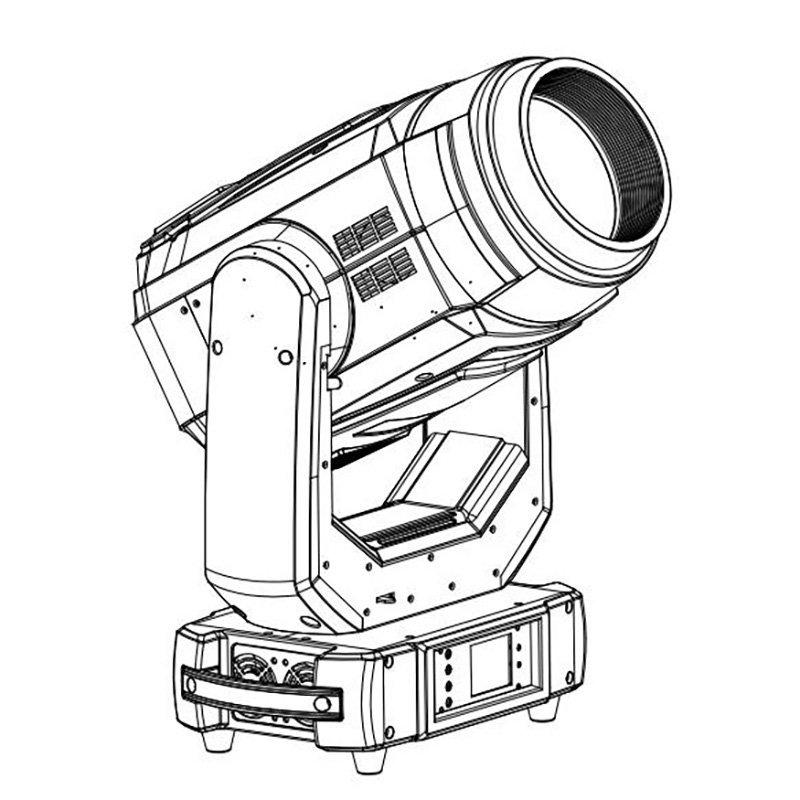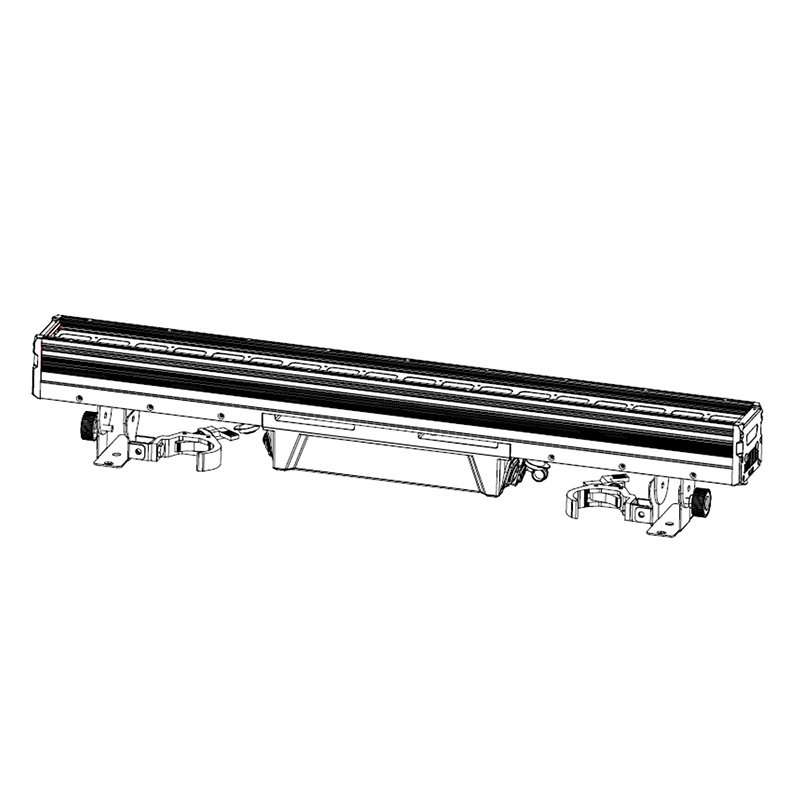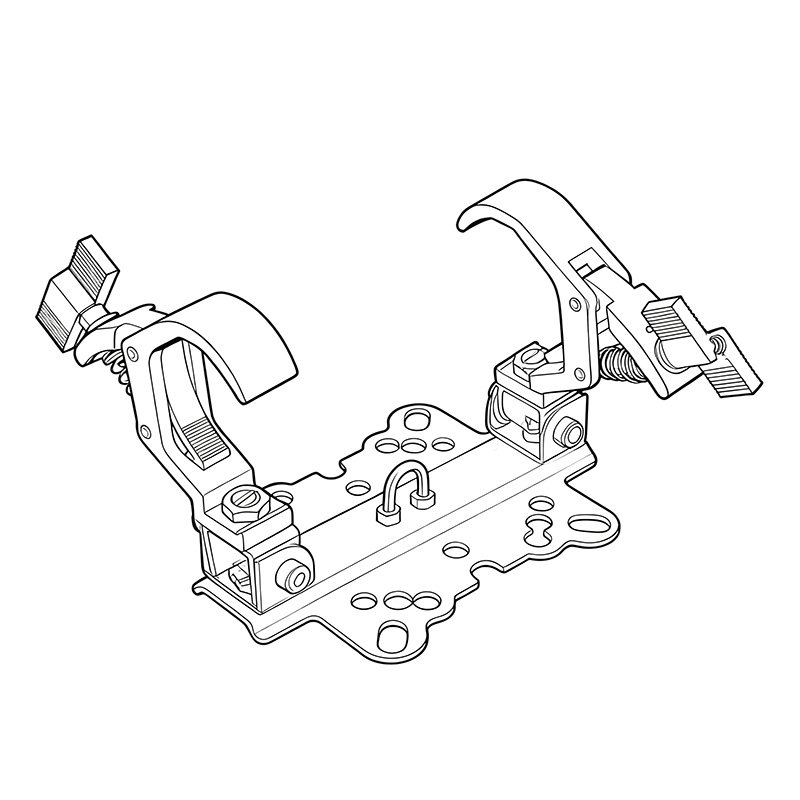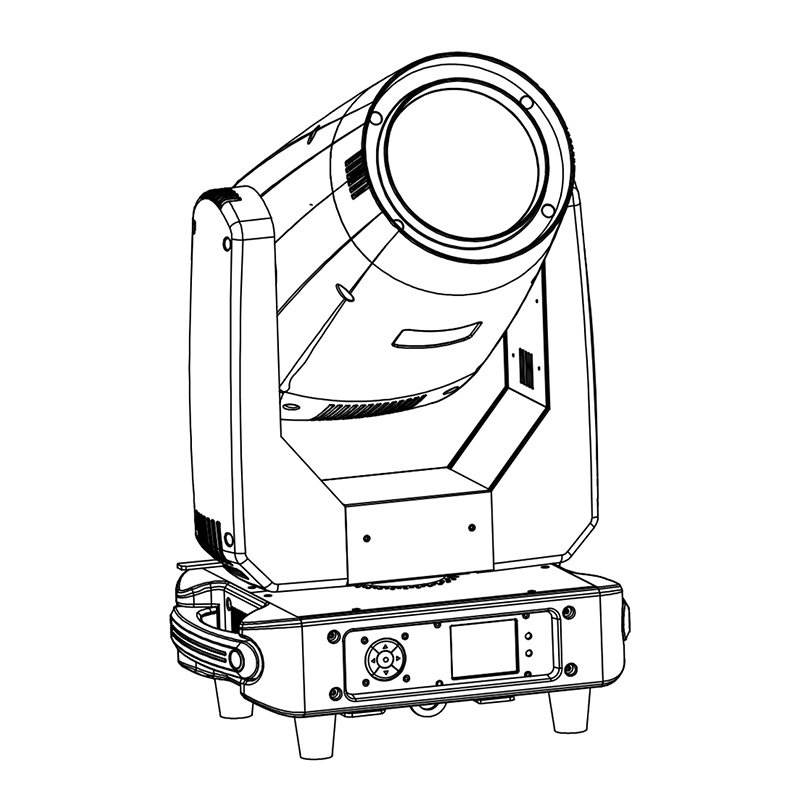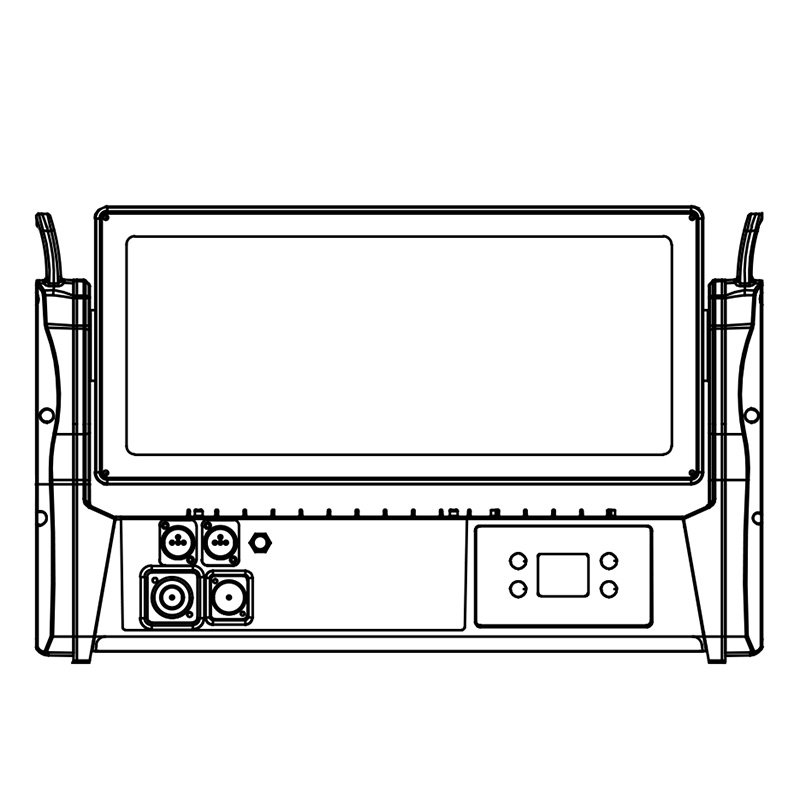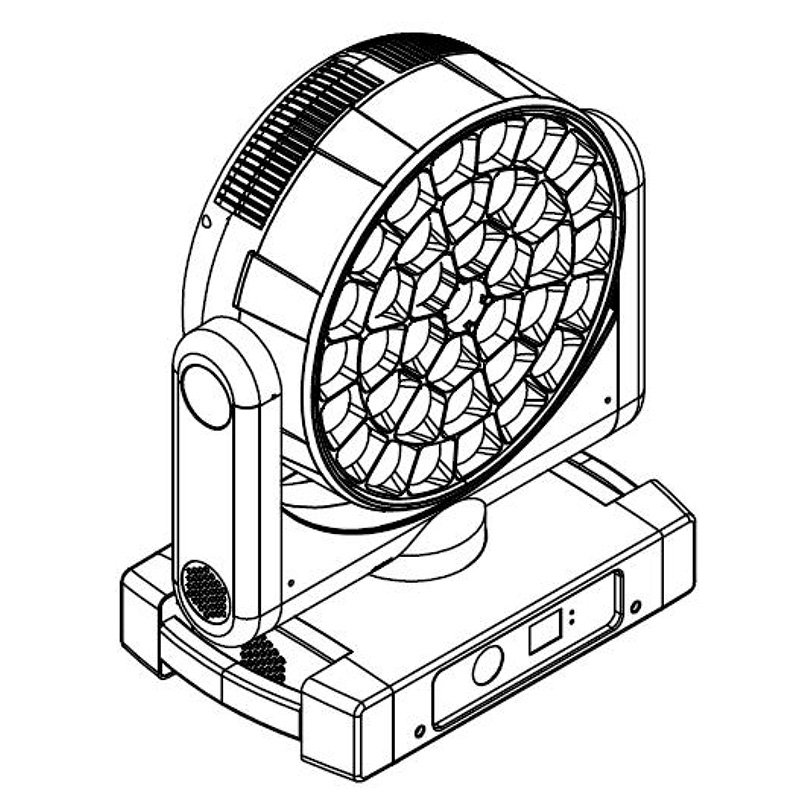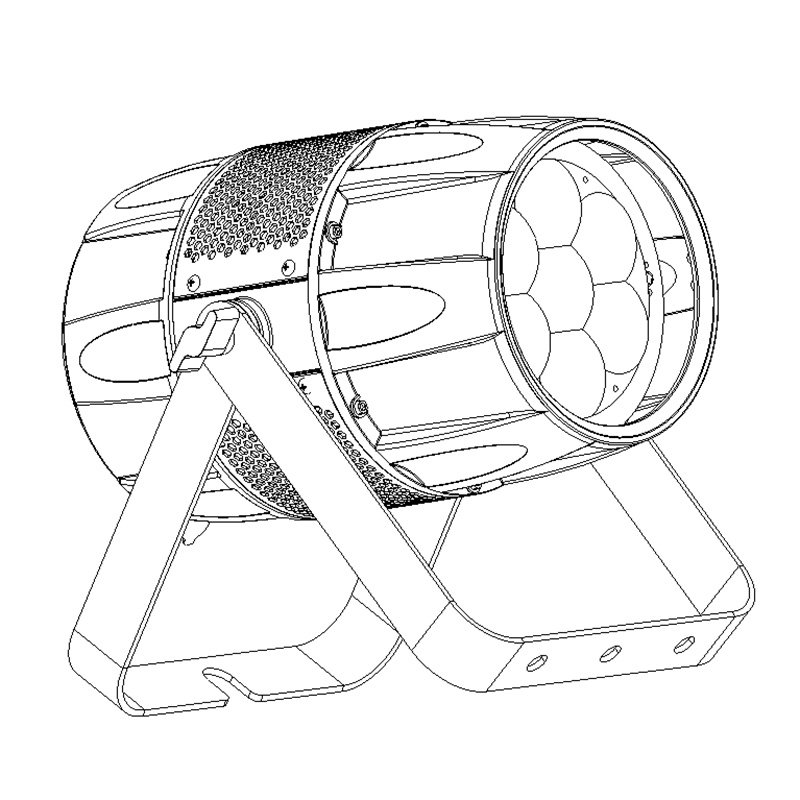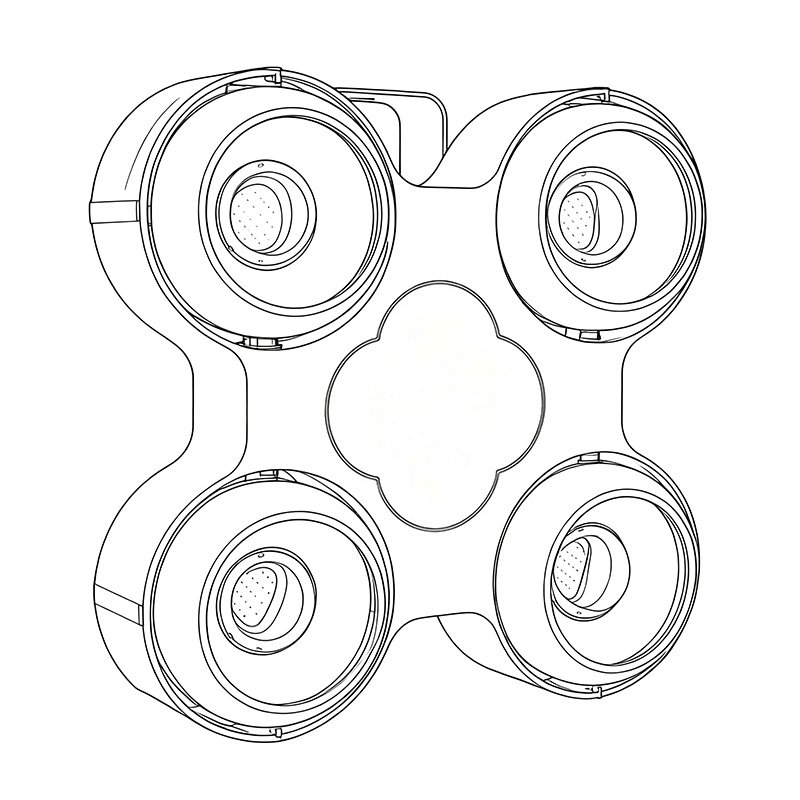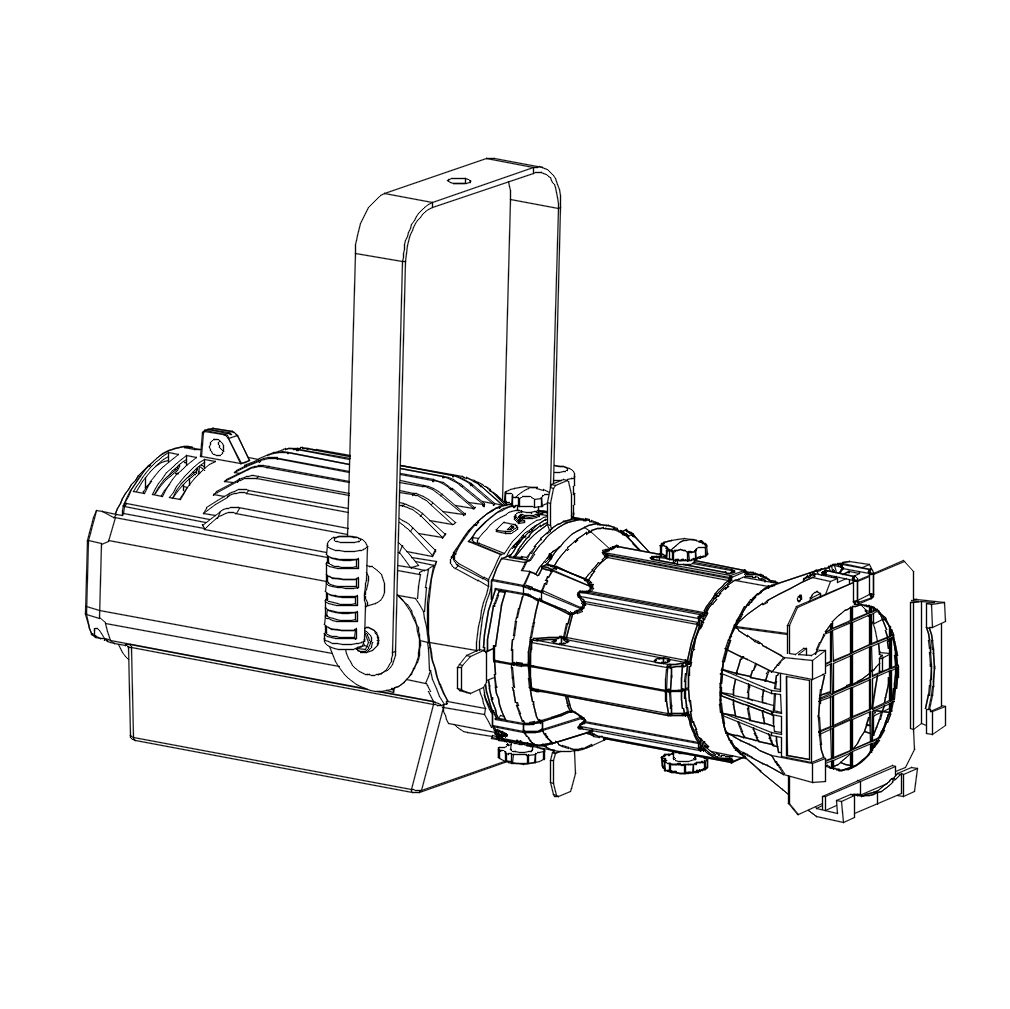Struggling to make your DJ sets visually pop? Feel like your lighting is static and uninspired? Moving head lights add that dynamic punch to truly captivate your audience.
DJ moving head lights are automated lighting fixtures that pan (move horizontally) and tilt (move vertically). They project beams, spots, or washes or effects of light and color, creating dynamic effects crucial for energetic DJ performances, parties, weddings, and small to medium stages.
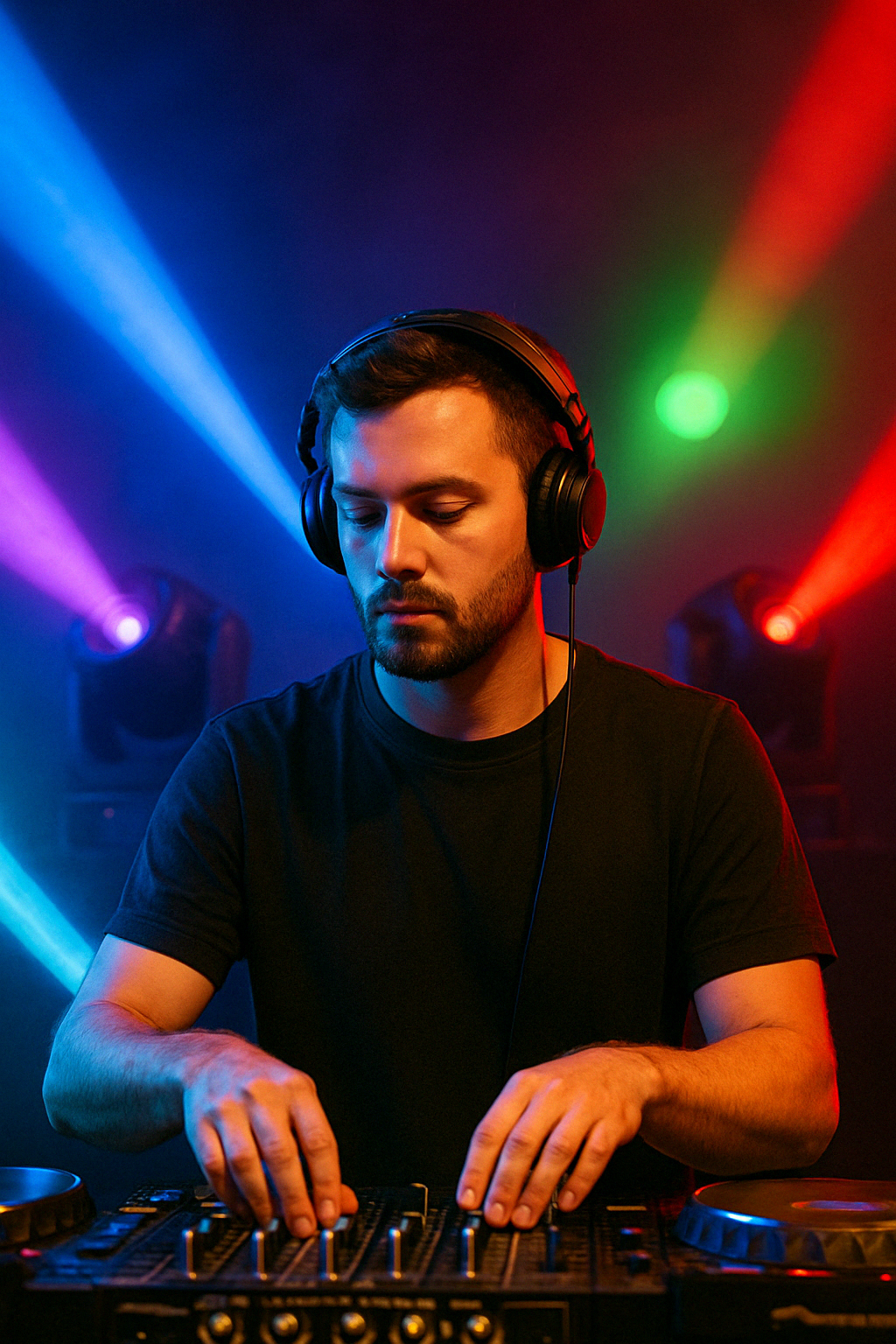
You've seen them sweeping across dance floors or highlighting performers, but understanding how they work and what makes them tick is key to using them effectively. Let's dive deeper into why these lights are becoming essential for any serious DJ or event creator looking to elevate their visual game.
Why Should DJs Invest in Moving Head Lights?
Worried your gigs lack that professional polish? Feel your audience isn't fully engaged? Moving head lights create the visual energy that syncs with music and transforms any space.
DJs love moving heads because they deliver high-impact, dynamic visuals far beyond static lights. They sync effects to music, spotlight key moments, wash areas with color, and project patterns (gobos), making events like weddings, parties, and club nights far more immersive and memorable.
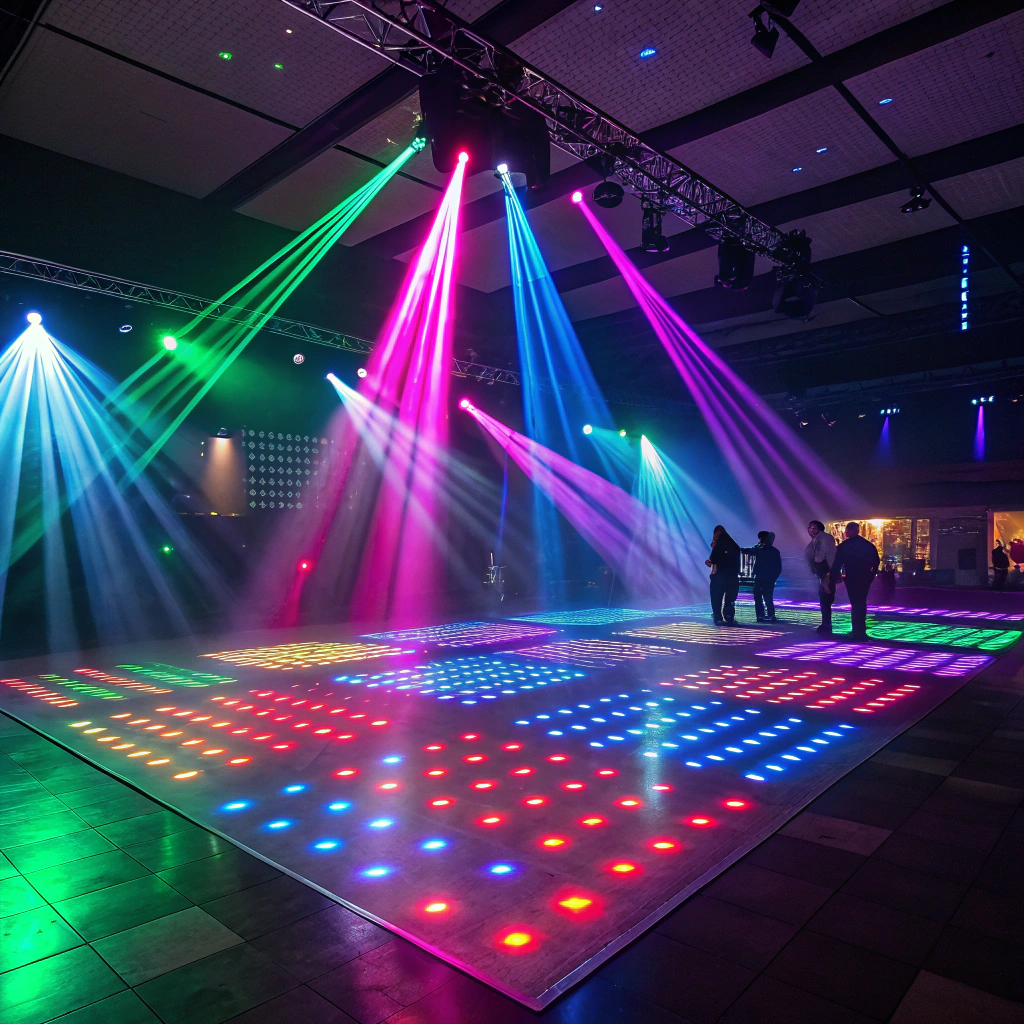
Think about the difference between a room lit by plain lamps versus one alive with moving beams of light. That's the power we're talking about. For a mobile DJ, showing up with a couple of moving heads instantly signals a higher level of professionalism compared to someone just using basic PAR cans. It's not just about brightness; it's about movement and change. Imagine programming a slow sweep for a first dance at a wedding, then switching to fast-paced strobing beams perfectly synced to a drop in an EDM track. This versatility allows you to tailor the mood precisely. Plus, with features like gobos (patterns), you can project textures or even custom logos, adding another layer of customization. They work brilliantly with fog or haze machines, making the light beams incredibly visible and creating stunning mid-air effects that truly fill a venue. It’s about crafting an experience, not just playing music.
Key Applications for DJs:
- Weddings: Creating romantic ambiance, spotlighting dances, energizing the reception.
- Parties: Syncing high-energy effects with music beats, covering the dance floor.
- Bars/Clubs: Building atmosphere, creating dynamic light shows, enhancing the DJ performance.
- Small Stages: Providing versatile lighting for bands or performers alongside the DJ.
What Are the Main Types of DJ Moving Head Lights?
Confused by terms like Beam, Spot, and Wash? Unsure which type of moving head fits your specific DJ needs? Choosing the right fixture type is crucial for getting the desired effect.
The main types are Beam (tight, sharp rays for mid-air effects), Spot (wider beam with gobos/patterns and focus), and Wash (broad, soft-edged light for coloring areas). Hybrid or Combo lights combine these functions, offering versatility in one unit. Mini moving heads are popular for portability.
Let's break down these types because picking the wrong one can be frustrating. I remember early on, I bought some cheap 'spots' hoping for sharp beams, but they were too wide and blurry for the effect I wanted. Learning the difference saved me money and hassle later.
- Beam: Think laser-like, super-concentrated light. Great for cutting through haze, creating dramatic aerial effects, and adding energy. Not ideal for lighting up a whole stage or performers, but amazing for eye-candy.
- Spot: More versatile than a beam. It has a defined edge, can often be focused, and crucially, usually includes gobos (metal or glass discs with patterns cut out) and color wheels. You can project shapes, logos, or just a sharp circle of light. Good for highlighting specific areas or creating textured looks.
- Wash: This is your workhorse for coloring large areas like a stage backdrop, ceiling, or dance floor. It produces a wide, soft-edged field of light. You don't get sharp beams or gobos, but you get smooth color mixing and broad coverage.
Feature Comparison:
| Feature | Beam Light | Spot Light | Wash Light | Hybrid Light |
|---|---|---|---|---|
| Beam Angle | Very Narrow (<5°) | Narrow to Medium (10°-30°) | Wide (25°+) | Variable (Combines Modes) |
| Edge | Hard, Sharp | Hard, Often Focusable | Soft, Diffused | Variable |
| Gobos | Rarely / Basic | Yes, Multiple Patterns | No | Often Yes |
| Focus | Usually Fixed | Manual or Motorized | Fixed (Not Applicable) | Often Yes |
| Best Use | Mid-Air Effects, Energy | Spotlighting, Patterns | Area Coloring, Coverage | Maximum Versatility |
Mini Moving Heads: These are smaller, lighter, and often less powerful versions, perfect for mobile DJs with limited space or budget. They might be beams, spots, or washes, just scaled down.
How Can You Control DJ Moving Head Lights?
Daunted by complex lighting controllers? Wondering if you need a degree to run your lights? Controlling moving heads can range from dead simple to incredibly sophisticated.
DJ moving heads are mainly controlled via DMX controllers (allowing precise command over movement, color, gobos, etc.). Many also offer simpler modes like sound-activation (lights react to music) or built-in automatic programs. Wireless DMX and app control are increasingly popular beginner-friendly options.
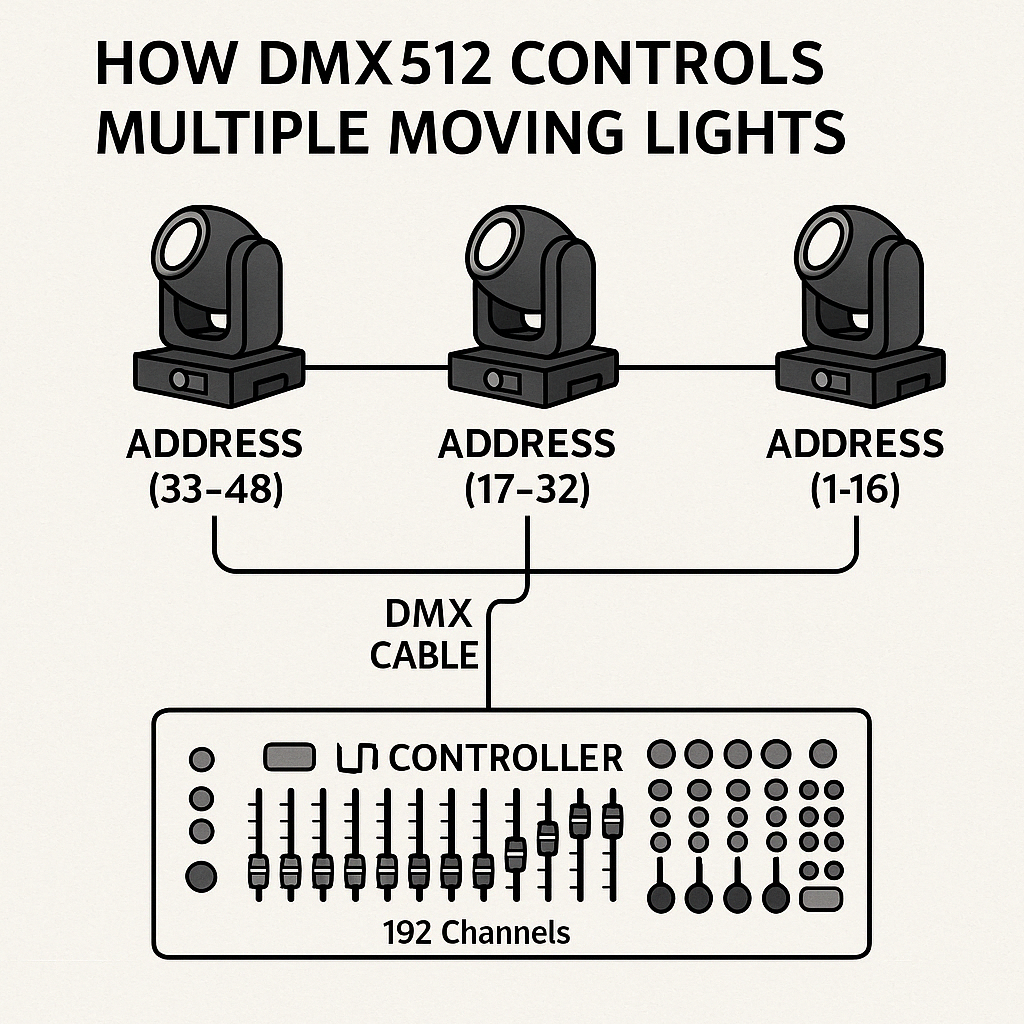
Control is where you unlock the real potential. When I started, I relied purely on sound-activated mode. It's okay for basic parties, but honestly, it can get chaotic and repetitive. The lights just react to any loud noise, not necessarily the beat you want.
- Sound-Activated: An internal microphone picks up sound (usually bass) and triggers pre-set movements or color changes. Easiest option, just plug and play. Good for beginners or background ambiance, but lacks finesse.
- Auto Programs (Master/Slave): Many lights have built-in shows. You can set one light as the 'Master' and link others as 'Slaves' via DMX cables. The Slaves will mimic the Master, creating synchronized effects without a separate controller. Better than sound mode, but still limited creativity.
- DMX (Digital Multiplex): This is the industry standard. You use a hardware controller (like a simple DMX 192 or a more advanced console) or software on a laptop to send signals down DMX cables to each light. Each light function (pan, tilt, color, gobo, dimmer, strobe) uses one or more 'channels'. More channels usually mean more control. It takes learning, but gives you total creative freedom to program exact looks, sequences, and cues.
- Wireless DMX / App Control: These are becoming huge. Wireless DMX eliminates long cable runs (using transmitters and receivers). App control lets you use a tablet or smartphone, often with a user-friendly interface, which is fantastic for mobile DJs who value simplicity and quick setup.
Choosing depends on your technical comfort and desired level of show control. Starting with auto/sound is fine, but aiming for DMX unlocks true professionalism.
What Features Matter When Buying DJ Moving Head Lights?
Overwhelmed by specs like wattage, channels, and beam angles? Afraid of buying the wrong light for your needs? Knowing key features helps you invest wisely and avoid disappointment.
Key features include Power/Wattage (brightness, suited for venue size), Light Source (LED preferred for longevity/efficiency), Beam Angle (coverage), DMX Channels (control depth), Control Modes (Auto/Sound/DMX), Pan/Tilt Range (coverage area), Weight/Size (portability), and Noise Level (fan noise).
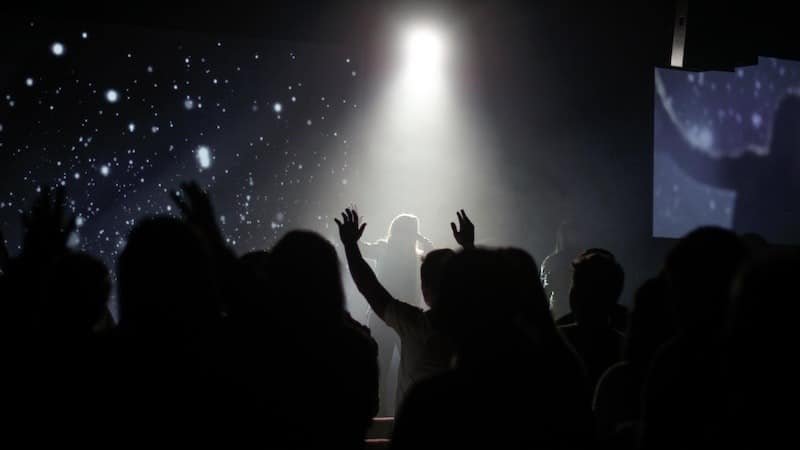
Buying lights feels like a big investment, so getting it right matters. I learned the hard way that just looking at price isn't enough. Here’s what I focus on now:
- Power (Wattage): Usually refers to the LED source (e.g., 60W, 100W, 150W LED). Higher wattage generally means brighter output. For small rooms or mobile gigs, 60W-100W might be plenty. For larger venues or competing with ambient light, 150W+ is better. Don't just chase wattage; lens quality also impacts perceived brightness.
- Light Source: Almost always LED now. LEDs last much longer (20,000+ hours vs. hundreds for old lamps), use less power, run cooler, and offer vibrant colors without needing separate color filters.
- Beam Angle: Critical! As discussed (Beam/Spot/Wash), this determines how wide the light spreads. Some spots have zoom lenses to vary this.
- DMX Channels: Ranges from ~4 to 16+ channels. More channels = finer control over individual functions (e.g., separate channels for fine pan/tilt, gobo rotation speed, prism effect). Simple needs = fewer channels. Complex shows = more channels.
- Control Modes: Ensure it has the modes you need (Sound, Auto, DMX). Master/Slave capability is useful too.
- Pan/Tilt Range: How far can it move? Typically 540° pan (1.5 rotations) and 180°-270° tilt. Wider ranges offer more coverage. Speed of movement also matters.
- Weight & Size: Crucial for mobile DJs! Lighter, smaller units are easier to transport, set up, and mount on portable stands.
- Noise: Lights have fans for cooling. Cheaper lights can have noisy fans, distracting in quiet settings like weddings or theatre. Look for specs or reviews mentioning noise level if this is critical.
- Build Quality & Reliability: Important for gear that gets moved around. Metal casing is generally sturdier than plastic. Check warranty and manufacturer reputation (like us at Aolait, focusing on quality!).
Consider your primary use case: mobile gigs need portability, club installs might prioritize brightness and features.
What Are Some Recommended DJ Moving Head Lights in 2025?
Ready to buy but unsure which specific models offer the best value and performance? Want reliable lights that won't let you down mid-gig? Let's look at some solid options.
For reliable performance and great value, consider Aolait's range. Our 100W LED Mini Beam offers punchy aerial effects in a compact size, while the Aolait 150W LED Spot provides sharp gobos and brightness for versatile applications. We focus on build quality and features DJs need.

Okay, this is where I can share some insights based on what we build at Aolait and see performing well in the market. Many DJs start with budget brands, but quickly find limitations in brightness, reliability, or control. Investing a bit more in quality pays off.
- Aolait 100W LED Mini Beam: I'm genuinely proud of this one. It's compact and lightweight, perfect for mobile setups, but the 100W LED source delivers a surprisingly bright and tight beam. It's got fast pan/tilt, basic colors, and essential DMX control, plus reliable sound/auto modes. Great for adding that dynamic energy without breaking the bank or your back.
- Aolait 150W LED Spot: If you need more features, this is a step up. The brighter 150W LED cuts through more ambient light, and crucially, it includes a gobo wheel (with rotating options) and a separate color wheel. This gives you far more creative possibilities for projecting patterns and creating sophisticated looks. It still maintains good DMX control, making it suitable for users growing into programming.
While brands like Chauvet DJ and ADJ offer popular fixtures, we at Aolait focus on hitting that sweet spot of professional features, robust build quality (essential for gear on the road), and competitive pricing, backed by our factory expertise. We understand the demands because our engineers have decades of experience. We ensure things like smooth movement, reliable electronics, and good thermal management. When you see someone like 'Marco' (our Italian distributor friend, name changed of course!) building his own successful lighting brand using fixtures sourced carefully, you know quality and reliability are paramount.
Want help choosing the perfect light for your setup? Reach out to us at Aolait! We can discuss your needs.
What Are Some Tips for Using Moving Heads in Your DJ Setup?
Just bought your first moving heads but unsure how to best use them? Want to avoid common mistakes and get professional results? Proper setup and usage make all the difference.
Maximize impact by placing lights strategically (e.g., high on T-bars or trussing for clear beams). Use haze/fog to make beams visible. Learn basic DMX programming for synchronization. Ensure secure mounting and safe transport to protect your investment.

Getting the lights is just step one; using them well is step two. I've seen expensive lights look terrible because of bad placement or no atmosphere. Here are my top tips:
- Placement is Key: Don't just stick them on a table. Mount them high! On speaker stands with T-bars, or ideally on trussing above your booth or the dance floor. Height allows the beams to travel across the room without blinding people directly. Symmetrical placement (e.g., one on each side) often looks best for programmed shows. Experiment with angles – pointing slightly down towards the dance floor, crossing beams, or hitting walls/ceilings for ambient effects.
- Haze or Fog is (Almost) Essential: Especially for Beam and Spot lights, the magic happens when you see the beam itself cutting through the air. A light haze machine (water-based is common) creates a fine mist that makes light beams highly visible. Fog is denser, better for specific dramatic effects. Check venue rules first!
- Basic DMX is Worth Learning: Even simple chases (lights activating one after another) or synchronizing movements look far more professional than random sound activation. Start with a simple controller and learn to set addresses and program basic scenes.
- Safety First: Always use safety cables when mounting lights overhead. Ensure stands are stable and properly weighted. Use sturdy cases for transport – moving heads have delicate internal mechanics (motors, belts) that can be damaged by bumps.
- Combine with Other Lights: Moving heads work best as part of a larger system. Use static washes (like LED PARs) for base color, then layer moving head beams/spots on top for dynamic effects.
- Power Management: Moving heads draw more power than basic LEDs. Ensure you have adequate power circuits, especially when running multiple lights, sound systems, and haze machines.
Taking a little time on setup and learning basic control elevates your entire presentation.
Conclusion
In short, DJ moving head lights are powerful tools for transforming any event's atmosphere. Understanding types, control, and key features helps you choose and use them effectively for stunning visual shows.

